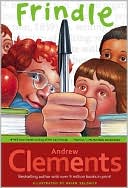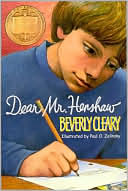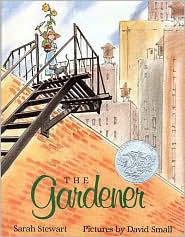Don't you love it when everything just comes together? This week, as I reached for good picture books for teaching inferences, my choices happened to come together in a way that helped students to think about broader issues.
I picked up
Tight Times at our library's used book store. I remembered it from watching
Reading Rainbow as a child (ah, Reading Rainbow!), and I knew that it was a bargain at $.50. Even though it is meant for younger readers, it worked nicely for making inferences. We stopped and talked about what "tight times" means, how we could use the illustrations to make inferences about the parents' feelings, and what we could figure out about the narrator. (The narrator of this book, who is not named, wants a dog, but his parents tell him he cannot have one because of tight times. Things get worse when the father loses his job. But then the boy finds a kitten in a trash can, and the boy's parents decide that he can keep him.)
"But I didn't like the ending," Mandy said. "The book was so sad at parts, and then it just ended with something funny. I didn't like that." What a great observation! I turned back to the last page and we talked about the ending. (In a way, I have to agree with Mandy.)
When we looked more closely at the last few pages, though, we saw that the illustrator was telling us a little more to the story. "Look! The dad is looking at the newspaper!" Michael noticed.
"What do you think he's doing?" I asked.
There was some puzzlement as students talked about this with their partners. Some students obviously knew about want ads and the classifieds; others did not. "Maybe he's just reading a comic to cheer up?" Keith guessed. This is a classic example of how inferences depend on background knowledge. Luckily, other kids spoke up. "There are lists of jobs in the newspaper," Favia said confidently. "He's probably looking for a job."
On the next page, students noticed that the parents looked happier, and guessed that maybe things were better. "Sometimes the illustrator tells you things that the author does not," I said.
The Gardener by Sarah Stewart, a perfect book for teaching inferencing, worked beautifully with
Tight Times. I explained that it was told in letter form (I love stories told this way) and asked students to talk with their partners about these words:
Lydia Grace
1935
Mama and Papa
train
Uncle Jim
windowboxes
bakery
the gardener
"Which words might relate to the setting?" I asked. We talked about the bakery, and the train, and students' guesses about who the gardener might be. "What's a windowbox?" asked Luke. We talked about what a windowbox is and how it related to the story.
This book leads to some great opportunities for making inferences. I was modeling an inference chart (three columns--inference, story clues, background knowledge) and this book was perfect. We weren't three pages in before students started buzzing about how this book was similar to
Tight Times. I know that things are working when they start naturally comparing texts--without questions, without probing, without my intervention. "Yes, but the boy in
Tight Times didn't have to go live somewhere else," I overheard. "I'd hate to do that!" someone else whispered.
My class this year is very visual, and they helped me to notice some new details in
The Gardener--like the way that Lydia is always shown in the light, and how that matches her character so perfectly. "There were things like that in the pictures in
Tight Times, too," Maura said. "Like how the dad was looking in the newspaper. And there are cats in both of the books."
Next week I'm going to expand the inferring into theme, and I've already picked out
Those Shoes as a good read aloud for this. What has worked out so well is that, even though I've been officially working on making inferences, these books have given us a chance to dive deeper into making connections and looking for broader themes in text.









